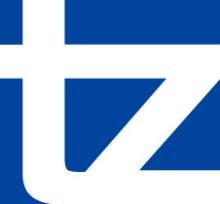Six Key Take-Aways From the 2019 False Claims Act Statistics Report
The False Claims Act remains a remarkably successful tool for fighting fraud on the government. According to annual statistics just released by the U.S. Department of Justice (DOJ), whistleblowers continue to collect handsome rewards for their brave efforts to root out and expose fraud through the filing of qui tam lawsuits. As a lawyer who represents those whistleblowers, this year’s statistical report affirms the importance of the public service that we help our clients perform.
Each year, the U.S. Department of Justice (“DOJ”) releases statistics about litigation and recoveries under the federal False Claims Act for the prior fiscal year. This most recent report shows statistics for the fiscal year 2019, which covers the period October 2, 2018 through September 30, 2019.
Here are six of the key takeaways from this year’s DOJ statistical report:
-
Whistleblowers continue to receive substantial rewards.
In FY2019, qui tam whistleblowers received $272 million in rewards. Although that is a considerable amount of money, it does represent a fairly significant drop from the prior few years. Indeed, it’s the lowest amount since 2009. Why the number dropped in FY2019 is a mystery to me. My firm’s experience, if anything, suggests that DOJ has become slightly more generous in awards to whistleblowers in successful cases. I strongly suspect that this number will go up substantially in FY2020 simply via “reversion to the mean.” Indeed, in FY2018 whistleblower rewards under the federal False Claims Act totaled $341 million and in FY2017 the total was even higher, at $536 million. Neither the law nor DOJ policy concerning these rewards has changed, so I interpret the year-to-year variation as merely a function of the particular cases that ended in each fiscal year. Remember that the whistleblower awards made in FY2019 are the result of lawsuits filed many years before and just reached the award phase in FY2019, so the FY2019 numbers do not necessarily reflect a particular change that occurred in FY2019. A more meaningful statistic is the 10-year average of $515 million per year.
-
Fraud in the healthcare industry continues to be the primary focus of False Claims Act litigation.
As has been true for many years, the majority of new case filings, settlements, and awards to whistleblowers came in cases involved the Department of Health and Human Services. That means Medicare and Medicaid. But cases continue to be filed and successfully litigated in many other areas, including defense procurement fraud, fraud in other areas of government contracting, and customs duties evasion.
-
The pace of DOJ enforcement under the False Claims Act has not slowed.
Potential clients and other attorneys often ask me whether the Trump Administration has been good or bad for False Claims Act enforcement. The FY2019 statistics show that False Claims Act enforcement is alive and well under the current administration. In FY2019, DOJ filed 146 new “no whistleblower” qui tam lawsuits under the False Claims Act (meaning lawsuits initiated directly by DOJ without a whistleblower). These lawsuits are more than were filed in either FY2017 or FY2018. And, indeed, in the last 20 years, DOJ filed more than that number of new cases only twice, in 2008 and 2016. This activity strongly suggests that the current DOJ continues to see the False Claims Act as a crucial tool, and one that it is eager to use to combat fraud.
-
The pace of new qui tam lawsuit filings appears to be slowing slightly.
The pace of new qui tam lawsuit filings (cases filed by whistleblowers) slowed slightly. Only 636 new qui tam cases were filed in FY2019. Over the past ten years, the average number of new qui tam cases filed has been 708 per year, with a peak in FY2013 and 757 newly filed cases. Accordingly, the pace in FY2019 was below-average, and about 16% below the FY2013 peak. Over the past four years, the number of new qui tam filings dropped each year slightly. The statistics themselves do not offer any explanation for that trend. An optimist might see this trend as a positive indication that less fraud is occurring. A pessimist might see this trend as a worrying sign that whistleblowers are less comfortable coming forward. A more technical explanation might be that this trend has developed since the Supreme Court’s 2016 decision in Universal Health Services v. United States ex rel. Escobar, 136 S. Ct. 1989 (2016), which clarified the False Claims Act’s “materiality” standard in a way that may be causing attorneys who represent whistleblowers to be more cautious in filing new cases that involve slightly more grey areas of regulation. Or, quite possibly, the trend might be a normal statistical variation signifying nothing at all.
-
DOJ often declines intervention in cases that eventually result in substantial recoveries for the government and taxpayers.
Occasionally, defendants take comfort from DOJ declinations, or judges see declination as a sign that the case is weak. These assertions have never been true, as the FY2019 statistics demonstrate yet again. In FY2019, the federal government recovered $293 million in declined cases. That’s certainly a lot less than the $1.9 billion recovered in intervened cases. But still, $293 million is a significant amount of money to add to the federal coffers, mainly because those are cases where the burden and expense of litigation are being borne by the private whistleblowers and their attorneys, rather than by the government itself.
-
The False Claims Act works.
Over the past ten years, the federal government has recovered approximately $40.4 billion from False Claims Act lawsuits. Of that amount, roughly $31 billion has been in qui tam cases that were brought by whistleblowers, which means that 77% of the total recovery has been the result of these cases. The “public-private partnership” of the Department of Justice and citizen whistleblowers at the heart of the False Claims Act is far and away from the most cost-effective fraud-fighting tool ever implemented. This model works, and it works incredibly well.




 />i
/>i
